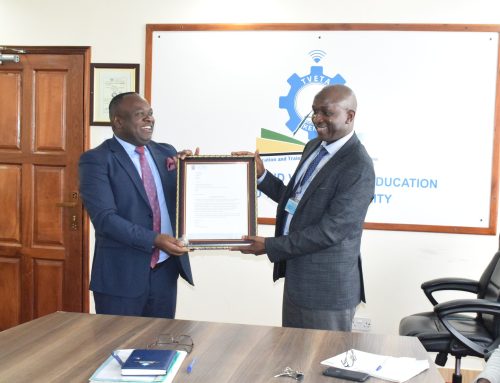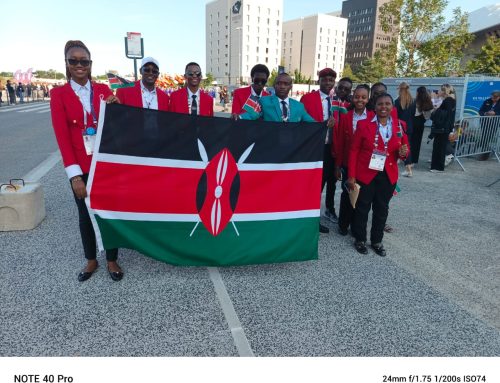Kipkirui Langat
I was privilege to participated in a technical and human resource training dubbed “Engaging Africa: Global Partners for Agricultural Development” which took place last week at Tamil Nadu Agricultural University, Coimbatore India in partnership with Dalhousie University, Halifax, Canada.
The project is supporting Uganda Skills Development Project (USDP), funded by World Bank and Agricultural Transformation through Stronger Vocational Education (ATTSVE) in Ethiopia, which is supported by Global Affairs Canada. The projects focus on transforming existing agricultural colleges into competency-based education and training (CBET) Centres of Excellence as part of the grand strategy to achieving food security. The choice of venue was informed by a lot of similarities in term of development levels and environment between India and Africa.
During the training, relevant information on food security and employment situations in India was shared. While the population of India is currently estimated at 1.37 billion, the country is not only food secured, but also exporting various food stuffs that include rice, sugar, soya bean, corn, dry beans and wheat to over 163 countries all over the world. Presently, the country is the lead exporter of rice and dry beans and third exporter of coconut after Indonesia and the Philippines.
The success of agricultural sector in India is attributed to two critical policy documents namely green revolution and doubling farmers income. At the time of its independence, India was an agricultural dependent economy and yet the state of Indian agricultural sector was dismal. From the lack of investment, a dearth of technology, low yield per acre and many such problems plagued the industry. The Indian government took steps to bring about the Green Revolution using High Yield Variety (HYV) seeds. The first introduction of HYV was done in 1965 coupled with better and efficient irrigation and the correct use of fertilizers to boost the crop with a view of making India food secured country.
The impact of the green revolution saw the production of wheat increased to 55 million tons in 1990 from just 11 million tons in 1960. Similar trends were also witnessed in other crops like rice and other cereals where there was generally increased yield per acreage. Increased agricultural productivity also lead to creation of employment especially in rural areas due to supporting industries like irrigation, transportation, food processing and marketing requiring workforce.
However, the strategy did not explicitly recognize the need to raise farmers’ income and did not mention any direct measure to promote farmers’ welfare. The net result has been that farmers income remained low, which is evident from the incidence of poverty among farm households. The low and highly fluctuating farm income was causing detrimental effect on the interest in farming and farm investments, and forcing more farmers, particularly younger age group, to leave farming. This caused serious adverse effect on the future of agriculture because the income earned by a farmer from agriculture is crucial to address agrarian distress and promote farmers welfare.
With this in mind, the government set a goal to double farmers’ income by 2023 as central to promote farmers’ welfare, reduce agrarian distress and bring parity between income of farmers and those working in non-agricultural professions.
For this to succeed research and training institutions were required to come up with technological breakthroughs for shifting production frontiers and raising efficiency in use of inputs. This included expanding the scope of agronomic practices like precision farming to raise production and income of farmers substantially. Similarly, modern machinery such as laser land leveler, precision seeder and planter, and practices like System of Rice Intensification (SRI), direct seeded rice, zero tillage, raised bed plantation and ridge plantation allow technically highly efficient farming.
However, these technologies developed by the public sector have very poor marketability. They require strong extension for the adoption by farmers. R&D institutions were tasked to include in their packages for grassroots level innovations and traditional practices which are resilient, sustainable and income enhancing. They were also to develop models of farming system for different types of socioeconomic and bio physical settings combining all their technologies in a package with focus on farm income. This would involve combining technology and best practices covering production, protection and post-harvest value addition for each sub systems with other sub systems like crop sequences, crop mix, livestock, horticulture, forestry. This is complemented by better price realisation, efficient post-harvest management, competitive value chains and adoption of allied activities. Such shift requires interdisciplinary approach to develop on knowledge of all disciplines.
Most of the development initiatives and policies for agriculture are implemented by the States and therefore, development of competent workforce at all levels became the key priority area of concern of each State. India currently has a total of 63 agricultural universities and several colleges with at least a university in each of the 33 states. All the agricultural universities and colleges across the country implement a common curriculum developed by Indian Council of Agricultural Research (ICAR), however each university can make up to 20% changes to customize it to the requirements of each States.
For example, at Tamil Nadu Agricultural University is the state university for Tamil Nadu and currently collaborating with 14 public and 32 private colleges to implement a common CBET programmes in agriculture. The training and assessments of the students are jointly conducted by the university and the colleges, and qualifications offered by the university. The university is working very closely with all stakeholders in the agricultural sector to develop market driven programmes right from certificates to postgraduate. Graduate from the university and the colleges provide services to farmers, agro-processing industries, logistics and distribution, and cooperative societies, while a number of them also go to self-employment.
Each campus has a placement officer to assist students in securing jobs. The university collects information about availability of opportunities and share the same with students and more often organisations are invited to conduct interviews on campus. The university also has a directorate of Agribusiness which provides incubation facilities to nature and commercialise students business ideas. The success of job placement is also attributed to very strong and active alumni linkage.
The university is also involved in various aspects of research in agriculture geared towards supporting the government and farmers. Some of their research outcomes have informed evident driven policies especially land use policy, mapping of the country for crop suitability, market accessibility, agro-processing and reduced cost of production. Other include access to clean planting materials, fertilizers, agro-chemicals, animal feeds and other animal health services.
The university also collaborate with Agricultural Skills Council of India (ASCI) to support capacity building by bridging gaps and upgrading skills of farmers, wage workers, self-employed & extension workers engaged in organized / unorganized segments of Agriculture & Allied Sectors.
The Indian experience of specialist university is a good example that institutions of higher learning in Kenya may need to consider. Specialist institutions will help in establishing national centres of expertise in key areas of the economy as key to economic growth is both research and knowledge transfer. The institutions will also be employer-focused and combine academic knowledge with practical application. This will also provide a perfect opportunity for universities and colleges to collaborate in addressing knowledge and skills requirements for a specific sector as a value chain.
The writer is the Director Genera/CEO, TVET Authority
langat.langat@tveta.go.ke



